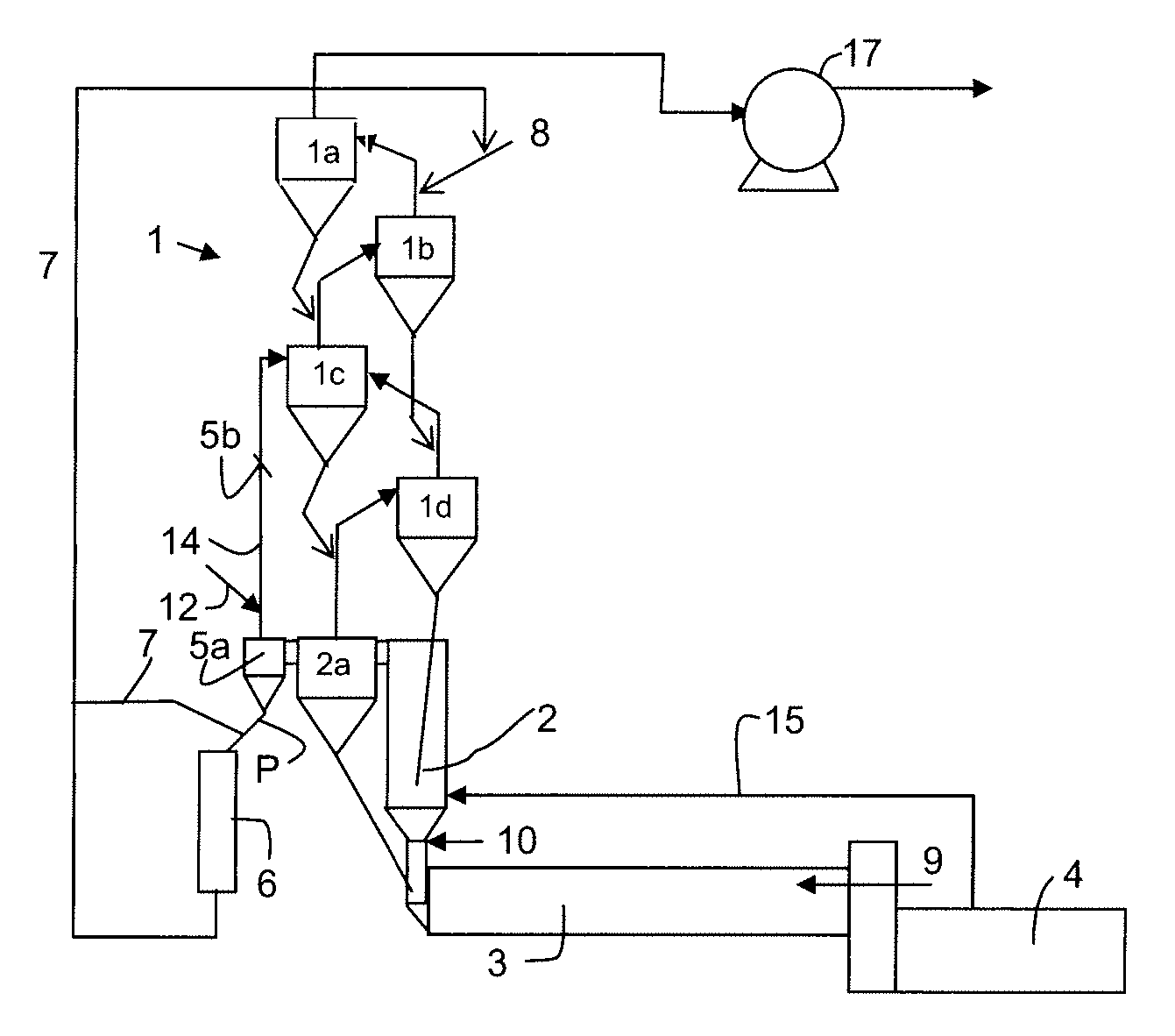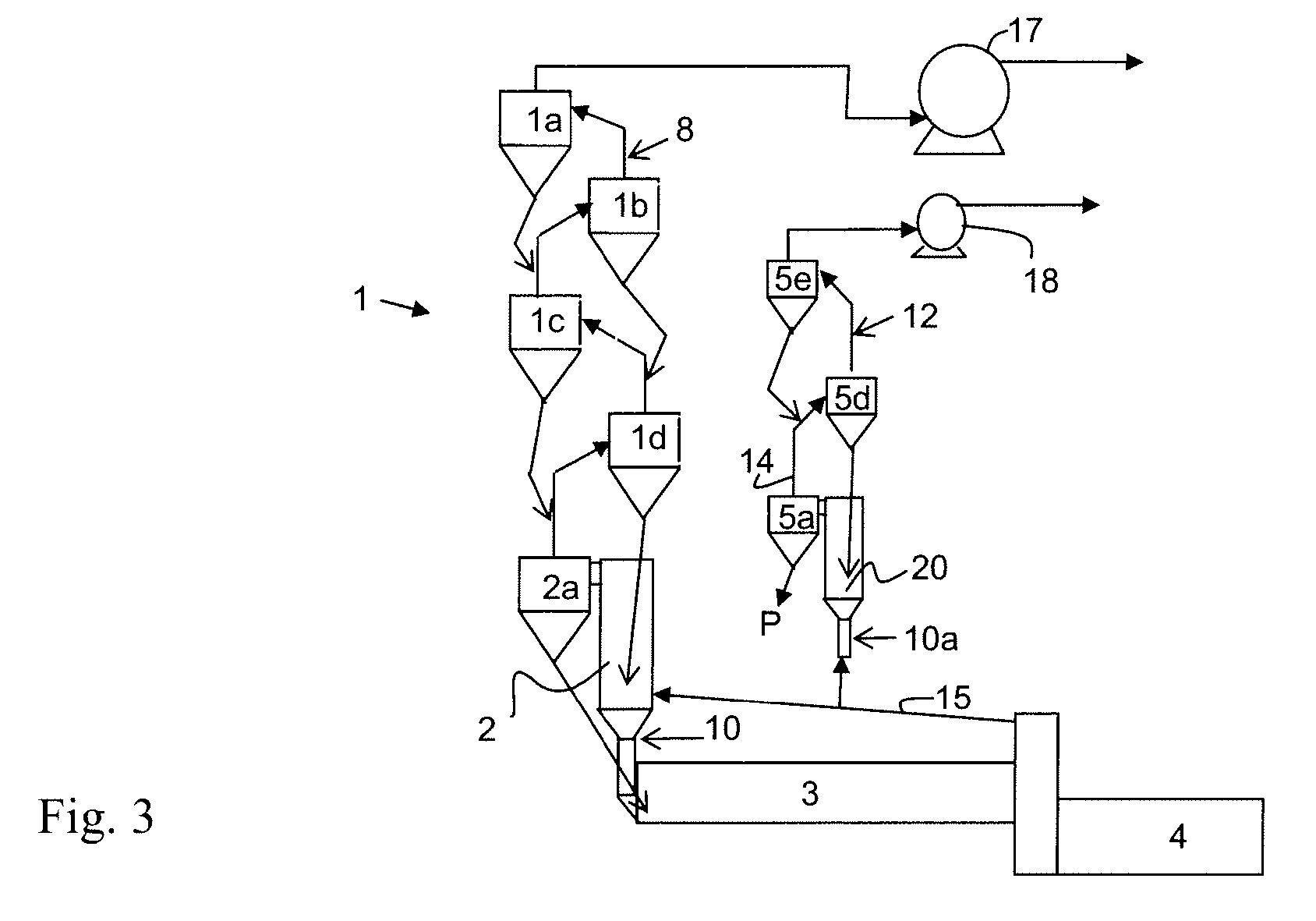Method and plant for manufacturing cement clinker
a technology of cement clinker and manufacturing method, which is applied in the direction of furnaces, furnace types, lighting and heating apparatus, etc., can solve the problems of gate getting stuck, difficult to provide a gate which is capable of operating reliably at such a temperature, etc., and achieve the effect of reducing the risk of clogging
- Summary
- Abstract
- Description
- Claims
- Application Information
AI Technical Summary
Benefits of technology
Problems solved by technology
Method used
Image
Examples
Embodiment Construction
[0019]In FIG. 1 is seen a cement manufacturing plant which comprises a cyclone preheater 1 with four cyclone stages 1a to 1d, a calciner 2 with a separation cyclone 2a, a rotary kiln 3 and a clinker cooler 4. The plant operates in traditional manner with the raw materials being introduced at an inlet 8 in the inlet duct for the first cyclone stage 1a of the cyclone preheater and they are heated, calcined and burned into clinker by being transported first through the preheater 1, the calciner 2, and then the rotary kiln 3 in counterflow to hot exit gases which are generated at a burner 9 in the rotary kiln 3 and a burner 10 in the calciner 10, respectively, and being drawn through the plant by means of a fan 17. The burned clinker is subsequently cooled in the clinker cooler 4 from which cooling air via a duct 15 is directed to the calciner 2. The plant further comprises an additional separation cyclone 5a which is mounted parallel to the separation cyclone 2a. The separation cyclone...
PUM
| Property | Measurement | Unit |
|---|---|---|
| temperature | aaaaa | aaaaa |
| temperature | aaaaa | aaaaa |
| temperatures | aaaaa | aaaaa |
Abstract
Description
Claims
Application Information
 Login to View More
Login to View More - R&D
- Intellectual Property
- Life Sciences
- Materials
- Tech Scout
- Unparalleled Data Quality
- Higher Quality Content
- 60% Fewer Hallucinations
Browse by: Latest US Patents, China's latest patents, Technical Efficacy Thesaurus, Application Domain, Technology Topic, Popular Technical Reports.
© 2025 PatSnap. All rights reserved.Legal|Privacy policy|Modern Slavery Act Transparency Statement|Sitemap|About US| Contact US: help@patsnap.com



